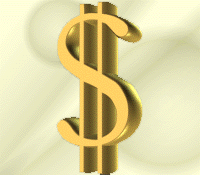| Banco Central Museum |

The Money Sign
With time, coins came to feature a graphic representation, generally in two parts: the abbreviated name of the money standard, which changes from country to country, and the money sign, the universal symbol of currency, which in the Portuguese language, cifrão, is etymologically rooted in the Arabic word çifr On this purpose, according to the Greek mythology, the legendary Heracles (Hercules), in order to perform one of his twelve labors, needed to transpose a high mountain. Having little time to climb, Hercules opened his way by splitting the mountain with his heavy and indestructible mace, separating it in two halves, connecting the Mediterranean Sea to the Atlantic Ocean. In one side, a large rock remained, later called Gibraltar and, on the other, the Acho Mountain, east of the Ceuta Island. The two columns so separated came to be known as the "Pillars of Hercules".
It is also known that, close to that region, the Phoenicians founded, between 1000 and 800 B.C., a trading post in Gades (Cádiz), which rapidly developed by grace of the Gualdaquivir Valley agriculture, and lasted for a long time. Later on, the Phoenician decline on the sixth century enabled the Greek expansion in the Mediterranean, mainly to the east shores and, from 535, Carthage came to dominate the Gibraltar Strait, blocking the Greek advance.
During the Punic Wars, after the victory over Carthage, the Romans in turn reached the Gualdaquivir Valley, dominating Cádiz and strengthening the Hispanic occupation, though this enterprise was gradual and only completed by the victory of Scipion, the African (Publius Cornelius Scipio Aemilianus Numantinus).
Thus, Christianity appeared very soon in the Iberian Peninsula, although Spain had been successively invaded by barbarians, including the Vandals, Suevians, Goths, Ostrogoths and Visigoths.
In 660, with the death of Ali, the first Islamic dynasty ended, and begun the Dynasty of Ommiad, lasting from 660 to 750 after Christ. In 710 after Christ, the Visigoths refused to recognize the son of King Vitiza as the successor to the throne and overturned him, leading the royal family to resort, despite the Christian predominance in the Peninsula, to the Muslim military help. The Muslims then headed West, conquered the north of Africa and from there, crossing the Gibraltar Strait, started the conquest of the Visigoth Reign of Spain and, later on, of the whole Iberian Peninsula. The Visigoths were then compelled to flee to the mountains, from where they reorganized and reacted to expel the invaders in a struggle that would last for seven centuries, when the ancient inhabitants of the Iberian Peninsula, in a movement known as Reconquista [reconquest], defeated their Arab lords which retreated definitely from the region, ruling only over the city of Grenada, which was retaken by the Spaniards in 1492.
The invasion of the Visigoth Reign by the Arabians took place in 711 of the Christian era, by general Djebel-el-Táriq (Táriq-ibn-Ziyád), the Conqueror, on behalf of the Ommiad Caliphate. The Muslim incursions led the Arab culture to take the European continent and, later, to spread over the world with the European conquests, mainly by the Portuguese, Spanish, French, English, and Netherlanders.
There are two versions on the path followed by the Arab general. According to the first, Táriq would have departed from Tangier, a city close to Morocco, of which he was the governor. The second version says that Táriq, in order to reach Europe, departed from Arabia and traveled through Egypt, the Saharan and Libyan deserts, Tunisia, Algeria, and Morocco; crossing the strait of the Pillars of Hercules and finally reached Spain. This strait came to be known after the eighth century as Djebel-el-Tárik, and currently is named Gibraltar, from the Arabic Djabal. Táriq caused to be engraved, in coins, a sinuous line, in the form of an "S", representing the long and tortuous way traversed. Cutting this sinuous line, he determined two parallel columns to be put in the vertical, representing the Pillars of Hercules, with the meaning of strength, power, perseverance. The symbol so engraved in coins -
- came to be recognized all over the world, and along times, as the money sign, the graphic representation of money.
Excerpt from "Casa da Moeda do Brasil: 290 Anos de História, 1694/1984".
 Back to the homepage Back to the homepage |